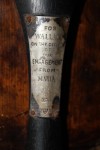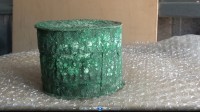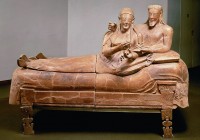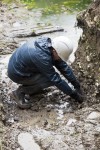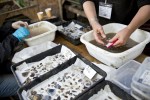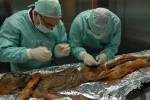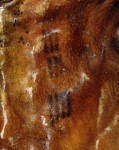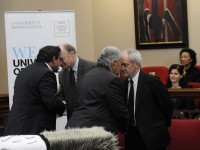 In early 2011, a collection of human remains from indigenous peoples around the world was found in storage at the University of Birmingham Medical School. Some of the skulls and bone fragments were labeled with their places of origin, but there was no documentation beyond that explaining how the collection came about, who donated what and when. The collection has never been on display, as far as anyone knows, nor has it been used in any known study or research. Keenly conscious of the ethical issues surrounding human remains being kept in museums as anthropological exhibits, the university decided to make every effort to return the remains to their ancestral homes.
In early 2011, a collection of human remains from indigenous peoples around the world was found in storage at the University of Birmingham Medical School. Some of the skulls and bone fragments were labeled with their places of origin, but there was no documentation beyond that explaining how the collection came about, who donated what and when. The collection has never been on display, as far as anyone knows, nor has it been used in any known study or research. Keenly conscious of the ethical issues surrounding human remains being kept in museums as anthropological exhibits, the university decided to make every effort to return the remains to their ancestral homes.
The first group of remains welcomed home by their living descendants was a collection of seven complete skulls, each in their box, and four bone fragments. The bones were individually labeled as having been excavated from a grave in San Luis Obispo, California, (on the Pacific coast about halfway between Los Angeles and San Francisco). From there they were sold to a private collector who later donated the remains to the University of Birmingham at some point in the 19th century. Out of respect for the bodies, no radiocarbon dating or any other kind of testing was performed on the remains, so the university couldn’t be sure how old they were or which tribe to return them to. University biomedical ethics professor Dr. June Jones contacted representatives of the Native American tribes in the area — the Chumash and Salinan tribes both had territory in San Luis Obispo — and the Salinan tribe responded with alacrity that they would be glad to welcome the long-lost ancestors back to their homeland.
In May 2012, Dr. Jones carried the remains to California where they were first brought to the county coroner who confirmed by examination of the teeth that they are indeed Native American. (The standard test for this is to look at the molars. Traditional diets included a constant supply of grit that wore down the molars into a characteristic shovel shape. EDIT: This is the practice as described in Jones’ online diary. Stacey comments below that in fact incisors display the characteristic shovel shape, and it’s due to genetics, not diet.) Two days later, the skulls and bones were reburied in an undisclosed location to keep them from being immediately re-looted. According to June Jones’ short but very sweet diary of the repatriation, the ceremony was private, dignified and moving, with tribal members present and the Sheriff and Coroner also there to pay their respects. From the diary:
As one Tribal leader said to us as we gathered around the grave “tonight our ancestors will sit around the fire together in their own land for the first time in many years.”
The repatriation made the local news in California because it was the first time tribal remains were returned from outside the United States for reburial in their native soil. It was also notable because the University contacted the tribes first rather than the other way around, and paid for the repatriation. In the US, the Native American Graves Protection and Repatriation Act allows for tribe members to claim ancestral remains from museums, universities, private collections, etc., but the onus is on the tribes to file suit. It’s expensive and often fraught with conflict with institutions who are reluctant to let go of anything in their collections for fear of a domino effect of repatriation.
On Friday, October 18th, a year and a half after Dr. Jones’ trip to California, a second group of tribal remains — a tattooed mummified Maori head (known as a toi moko) and four skulls (known as koiwi tangata) — have been formally returned to their homeland. A delegation from the Museum of New Zealand Te Papa Tongarewa received the remains in a traditional ceremony.
[youtube=http://youtu.be/ZlANNmGgdZ8&w=430]
Arapata Hakiwai, co-leader of the New Zealand museum, said the ceremony was important “for the elders to tell the ancestors they’re going to journey home soon”.
Te Herekiekie Herewini, manager of the repatriation programme, said: “In our beliefs your spirit and life force comes from the particular part of the country you’re from. It’s important for your life force to go back to that place. Repatriation allows both sides to reconcile their histories.”
The remains were then flown to New Zealand where they were welcomed in a traditional Maori ceremony in Wellington. Their final destination has yet to be determined. First Te Papa museum researchers will attempt to determine their precise origin so they can be buried in their homelands as per Maori custom. In the meantime, the museum will care for the remains in private with all proper cultural respects.
The Maori have been working for decades to reclaim their ancestral remains scattered in museums, schools and hospitals around the world but overwhelmingly in Europe. They’re increasingly successful as attitudes towards human remains in institutions shift from the impersonal to a recognition of their cultural and religious significance. The University of Birmingham has been a trendsetter in this, taking a strong stand in favor of repatriation and taking it upon itself to see that human remains in its collections find their way home. In ten years, the university’s repatriation program has returned more than 100 items. It also works with Te Papa to identify and return remains in other UK institutions, of which there are an estimated 400 pieces that we know of. There are probably many more still out there undocumented and unrecognized, like these heads were before their rediscovery in 2011.


